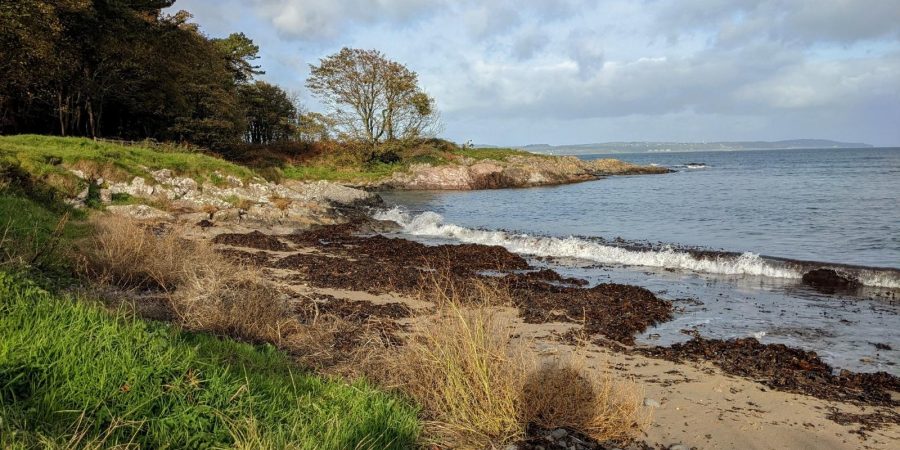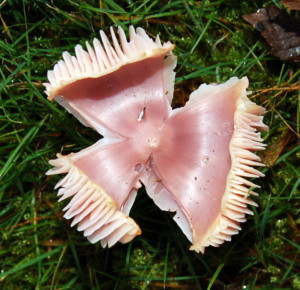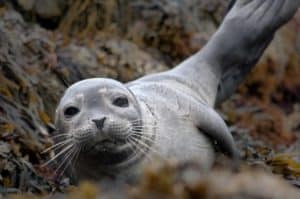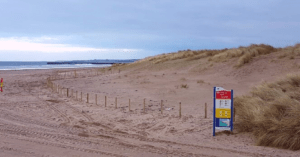Seaweed is found all along Northern Ireland’s coast. We’ve been finding all sorts of amazing ways to make use of seaweed for centuries. We eat it, we use it for its medicinal properties, we use it in the garden and we even bathe in it. However, we now understand how important seaweed is in ecological terms and how it can help in the fight against climate change.
What is Seaweed?
The word ‘seaweed’ is the collective term we use for marine macroalgae. These plant-like organisms anchor themselves to the seabed or to rocks around the coast. Unlike plants, seaweeds do not have roots, but they do share similar characteristics. Macroalgae require light, water and nutrition to grow. They also use a process called photosynthesis to convert sunlight to energy.
Why are we interested in seaweed all of a sudden?
The process of photosynthesis absorbs vast amounts of carbon dioxide and releases oxygen as a by-product. It turns out that macroalgae are really good at storing carbon dioxide. When the algae dies, much of the tissue floats into deeper water and the carbon is ‘locked’ away in carbon sinks.
We now know that rising sea temperatures caused by climate change is damaging marine ecosystems and causing the carbon to leak back into the atmosphere. The good news is that this can be reversed.
Their importance to biodiversity
Seaweeds play an important role in marine and coastal ecosystems. For example, Kelp forests provide a vital habitat for many marine species. Seaweed beds are also known to provide birds and mammals with foraging opportunities.
One of the more surprising benefits we derive from macroalgae is their importance in the fight against coastal erosion. Due to how and where they grow, living seaweed are able to dissipate wave energy, which can slow coastal erosion. Almost as part of the same process, the seaweed is capturing sediment and nutrients which ultimately helps to feed the marine ecosystem.
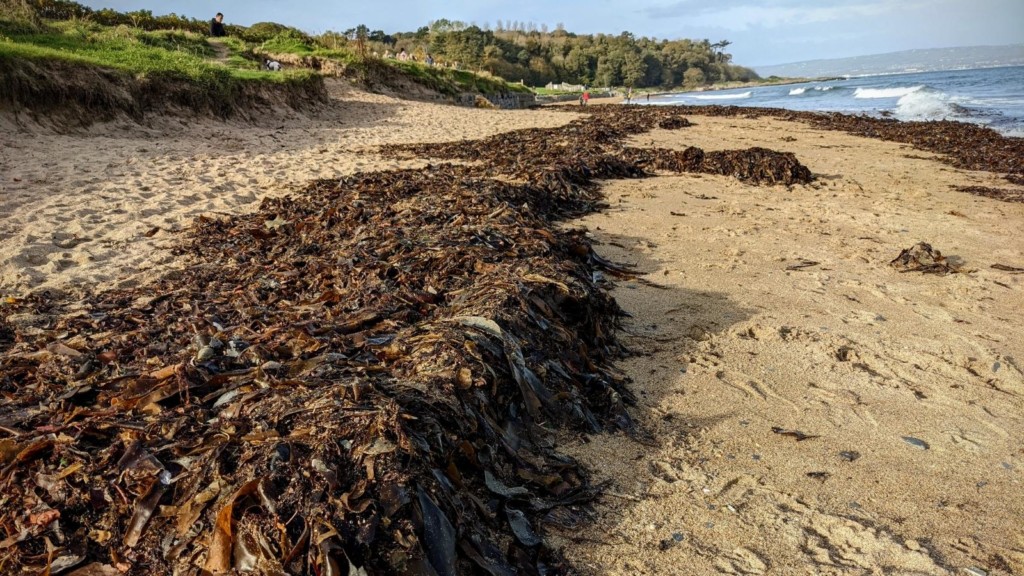
If you’ve ever been to the beach, there’s a good chance you will have come across ‘driftweed’. This is seaweed that has been washed ashore by the wind and sea. While you might think that this creates a mess, it’s actually really good for that beach. Just like living seaweed, driftweed supports many species and without it, the coastal ecosystem would be worse off.
Another benefit of driftweed is that salt tolerant plants are able to establish themselves along the driftline which helps the development of sand dunes.
Seaweeds can grow fast – up to 3m in 6 months. While they grow, they absorb CO2 which reverses the acidification of seawater, which again benefits the marine ecosystem. More seaweed means a more diverse and abundant sea life all while helping to reduce global levels of CO2.
We now understand that if we take care of the seaweed, the seaweed can take care of the marine ecosystem for us.
Common types of Seaweed
It’s estimated that there are over 10,000 species of seaweed around the world. However, there is a type of seaweed that we will all be familiar with and that’s ‘Palmaria Palmata‘ or dulse as it’s more commonly known. Famous for being sold at the Ould Lammas Fair, dulse has actually been part of our diet for many years. While it can be eaten on its own, it’s more often used as an ingredient in fashionable recipes such as soda bread, a super food salad or a noodle stir fry.
If you’ve ever tried sushi, you will probably have eaten ‘nori’ which is a type of seaweed. Nori is dried into sheets and used to wrap sushi. Did you know that nori is harvested commercially from our shores?
Brown Algae
Probably the most familiar type of seaweed on the shores of Northern Ireland. You may have discovered ‘Oarweed’ (Laminaria hyperborea) or ‘Knotted Wrack’ (Ascophyllum nodosum) washed up on the beach.
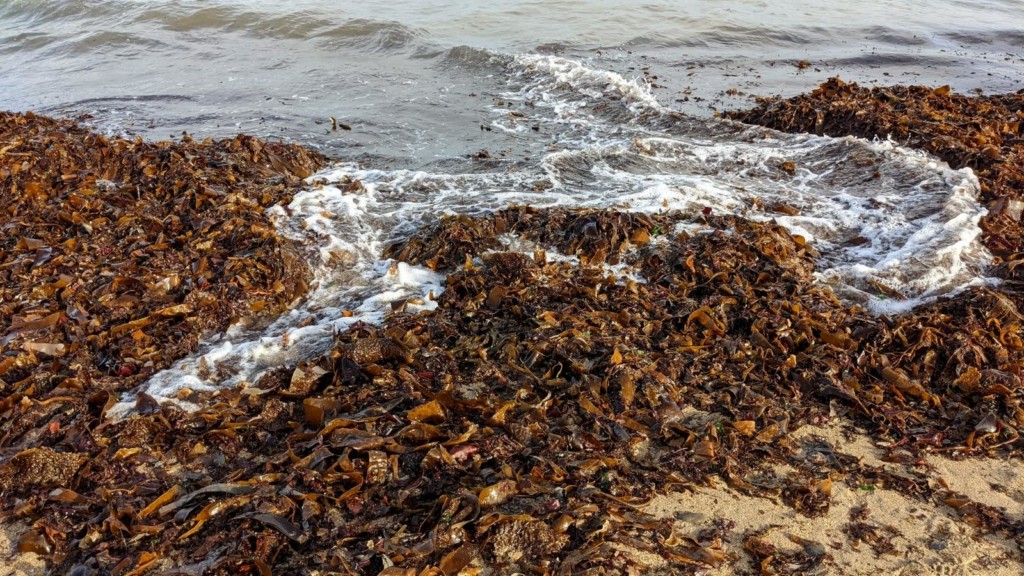
Red Algae
The most obvious red algae is of course dulse, but Northern Ireland has many other species including nori (or Porphyra to give it its proper name).
Green Algae
Sea Lettuce (Ulva sp.) which can be used to make laverbread.
Seaweed harvested in Northern Ireland
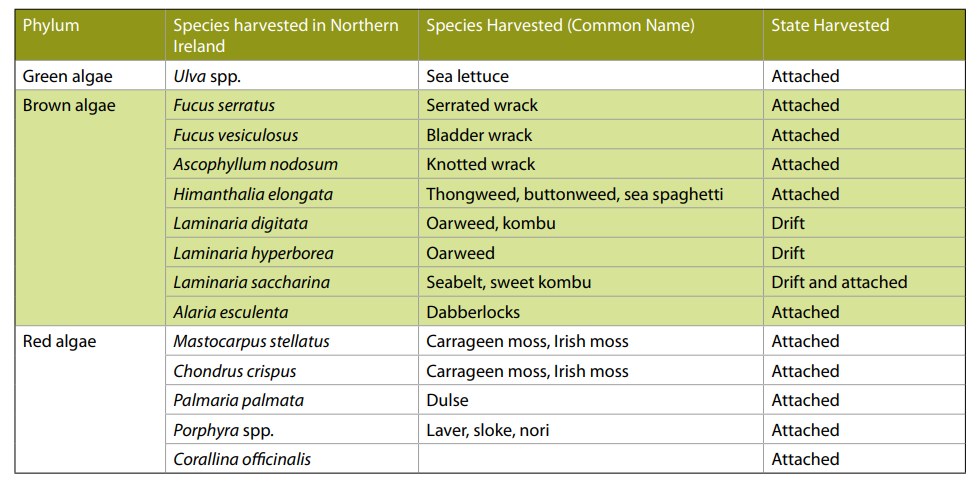
There are a few companies who commercially harvest seaweed in Northern Ireland today. The seaweed is primarily used in food, cosmetics, horticulture and seaweed baths.
What can you use seaweed for?
Due to its versatility seaweed has many potential uses. These are just a few of them.
You can eat seaweed
It’s well known that Irish people supplemented their diet with seaweed during the famine, but did you know that seaweed has been labelled a superfood?
For starters, seaweed provides many nutrients including carbohydrates, protein, minerals and polyunsaturated lipids. If you compare dulse (Palmaria palmata) to wheat, rice and corn flour, you can see why some people refer to dulse as a superfood:
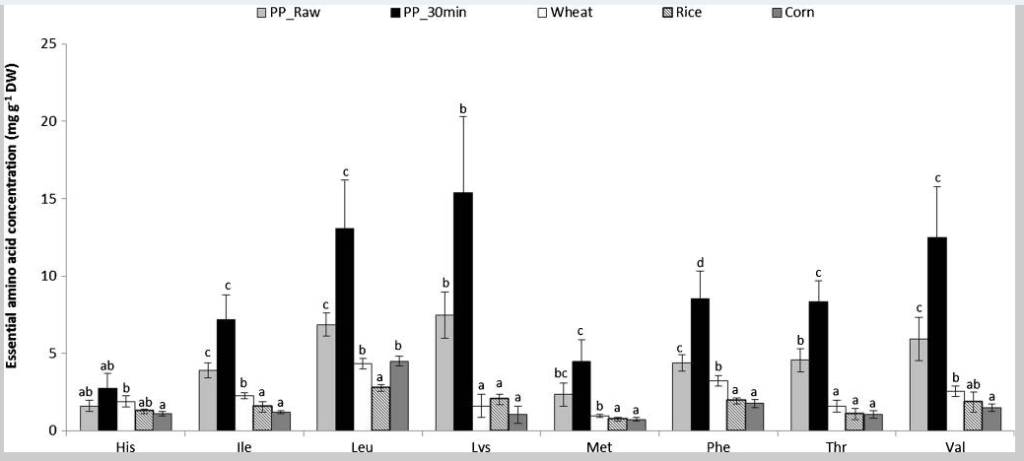
Governments around the world are encouraging all of us to eat more plants. Could you be persuaded to add seaweed into your shopping basket?
Can seaweed make you healthier?
Please speak to a nutritionist or your doctor before making a significant change to your diet.
Take a trip to your local health food shop and you’ll be amazed by the range of seaweed supplements that are available. In addition to being actual food, seaweed can be introduced to your diet to help maintain a healthy lifestyle.
What are the health claims?
- Seaweed contains iodine and tyrosine (an amino acid) which can help your thyroid gland to function properly.
- In addition to the fatty acids above, seaweed is a rich source of vitamins, minerals and omega-3 fats making them a good addition to traditional vegetables.
- It is claimed that seaweed also provides a good source of bioactive compounds which can act as antioxidants and anti-inflammatories (they protect your body against cell damage).
- Rich in dietary fiber, eating seaweed can encourage the growth of good bacteria and improve your gut health.
- A simple way to introduce seaweed into your diet is by using it as seasoning on your dinner. Rather than sprinkling salt or pepper over your food, try adding seaweed seasoning instead. This could be a good way to increase the amount of nutrients in your diet.
Take a Seaweed Bath
Seaweed baths are very common and it’s not hard to see why. Comparable to a hot steam sauna, the seaweed acts as a natural rejuvenator for your body. Some of the purported benefits include:
- Rehydrating your skin;
- Relieving conditions like psoriasis, acne, eczema;
- Reduce back and muscular pain;
- Help to ease rheumatism, arthritis and assist circulation;
- Improve the elasticity and appearance of your skin;
- May reduce cellulite.
Use seaweed to improve your garden
You might not even know it, but if you’ve used a fertiliser with ‘Ascophyllum nodosum‘ included in the box, you’re actually using seaweed to fertilise your garden. And that’s not a bad thing. As well as being organic and locally sourced, these contain stimulants that increase crop yields that you can’t get in other fertilisers. It’s also thought that the crops benefit from improved plant health and survive for longer.
As tempting as it might be, we don’t recommend you rush out to the beach to grab yourself some ‘free’ fertiliser. Although floating seaweed can be harvested as part of the public right when the tide is in, seaweed remaining as fresh vegetation or drift when the tide is out cannot be taken. We’d prefer it if you left the seaweed where it is so it can do its job of protecting our coast.
Do you want to learn more about seaweed?
- For a good source of general information about all aspects of seaweeds visit https://www.seaweed.ie/.
- Queen’s University Belfast have a long history of seaweed research.
- NUI Galway have carried out research on “Algal/Marine Plant Ecology”.
- You can join the Irish Seaweed Research Group on Facebook.
- Learn more about Northern Ireland’s impressive marine diversity.
- If you have a broader interest in species diversity check out the National Biodiversity Network.
- Take part in The Natural History Museum’s Big Seaweed Search where you can monitor the effects of environmental change on Britain’s sealife by exploring the seashore and recording the seaweeds that you find there.
- Become a Marine Nature Recorder with Ulster Wildlife:
“By getting involved in ShoreNI you will help develop your coastal marine wildlife ID skills, which in turn will improve our knowledge and understanding of some of the most important species along our coastlines.”
